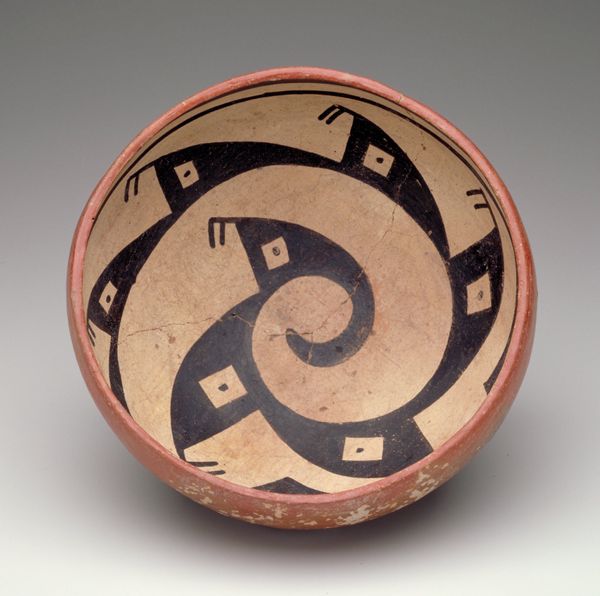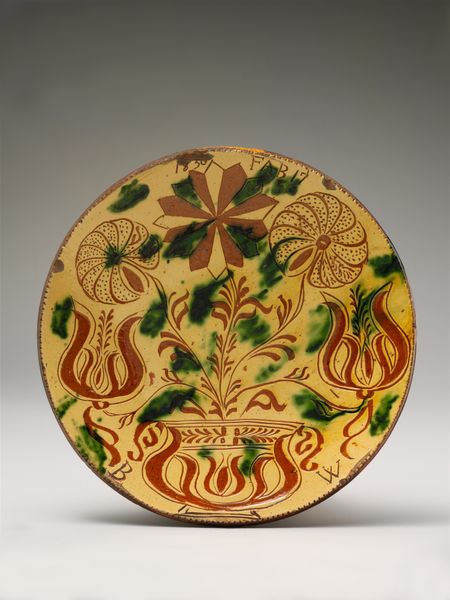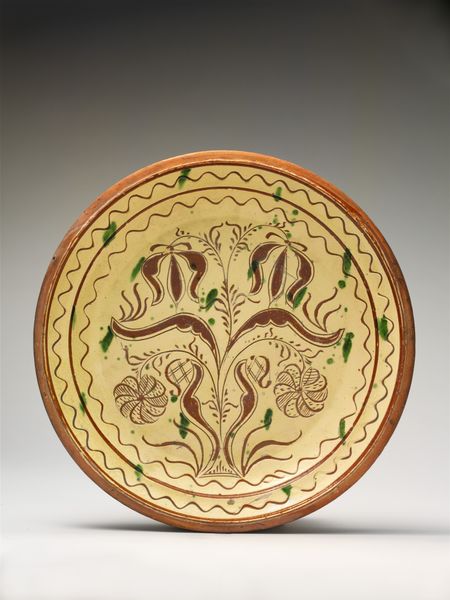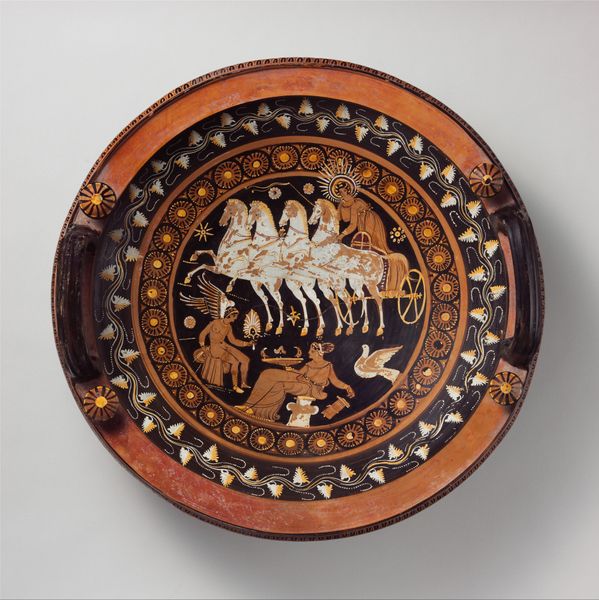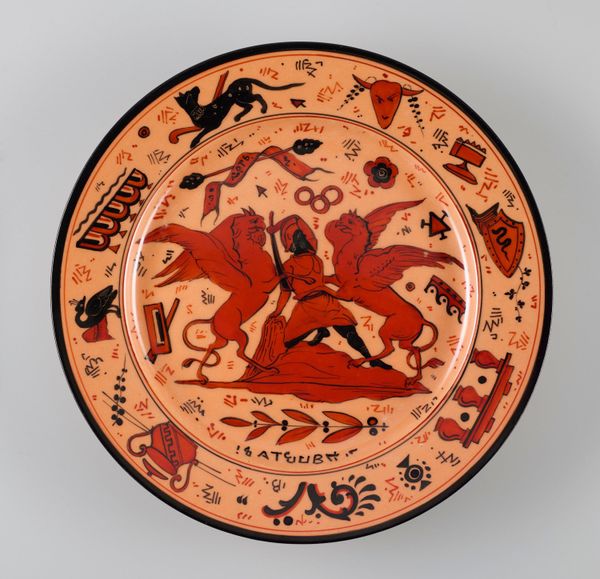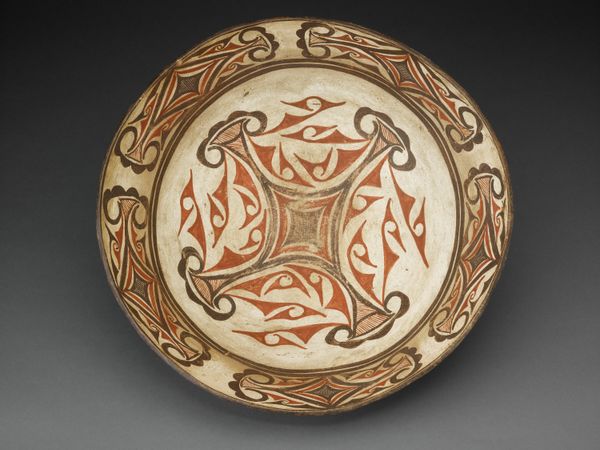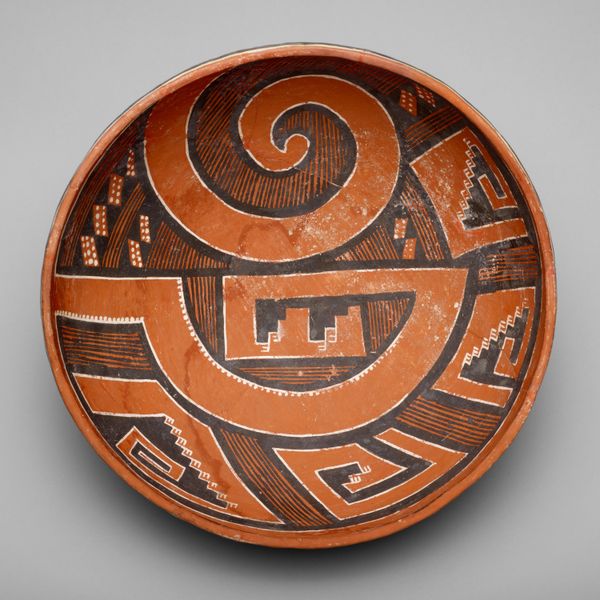
ceramic, earthenware
#
ceramic
#
flower
#
round design
#
earthenware
#
stoneware
#
folk-art
#
united-states
#
decorative-art
Dimensions: 13 1/2 in. Diam
Copyright: Public Domain
Curator: Here we have a redware slip-decorated dish crafted by the Dennis Family Potters between 1790 and 1810. It’s earthenware, a form of ceramic. Editor: You know, looking at this plate, I get this immediate feeling of hearth and home. The warm terracotta tones, the simple flower design...it's like a hug in ceramic form. It makes me think of cozy kitchens and sun-drenched window sills. Curator: Absolutely. This kind of dish reflects a broader trend in early American decorative arts. Folk art like this played a crucial role in expressing identity, particularly within the context of a young, developing nation. Utilitarian objects became canvases. Editor: "Canvases" is a perfect word for it. See how the artist took this simple earthenware and turned it into something...almost celebratory? The creamy slip decoration dances across the red like frosting on a simple cake. And those slightly imperfect circles, I can almost feel the hand that created them. I mean, how does it hit you? Curator: The radial design certainly draws the eye, framing the stylized floral motif at the center. What's interesting is the interplay of cultures influencing its making; earthenware techniques brought from Europe but now expressed in a distinct American vernacular. These wares weren’t displayed so much as they were a feature in daily life, their patterns and textures adding layers to family ritual. Editor: So much art tries so hard to be profound. This, though? It’s profoundly unpretentious. A flower on a plate. Nothing more, nothing less. In the best way. It makes you realize how art, real art, sneaks into our lives disguised as the everyday. It whispers of history, culture, and the shared human need for beauty, even at the dinner table. It sort of stays with you, this piece, doesn't it? Curator: It does, because folk art isn't just about aesthetics; it reveals community. We gain insight into lives, values, and skills that define an era through pieces like this one. Editor: I guess next time I'm setting my own table, I’ll think twice about what these humble things truly represent. Thanks for a little slice of history served sunny side up.
Comments
No comments
Be the first to comment and join the conversation on the ultimate creative platform.
